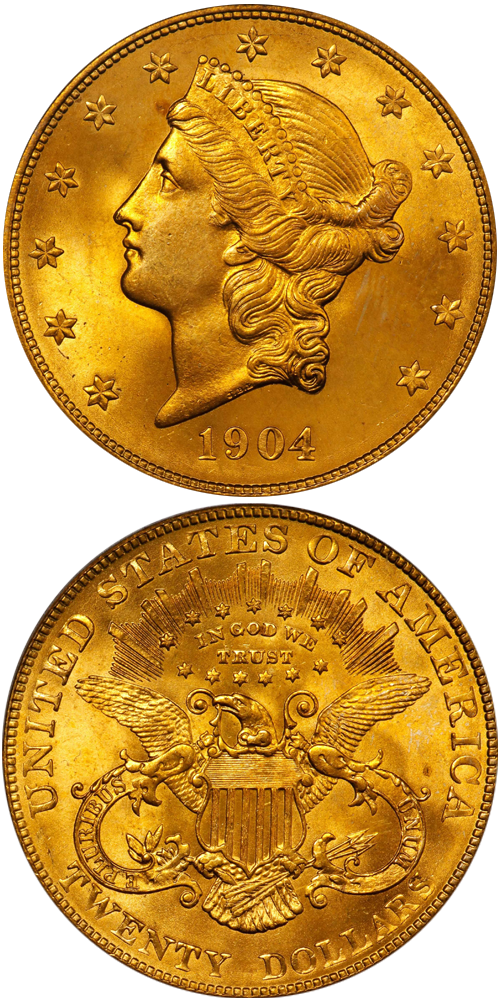1904 Liberty Head Double Eagle
The 1904 Liberty Head $20 double eagle is a historic relic of American commerce with direct lineage to the California Gold Rush. The first coins of this design type were released for circulation in 1850, just two years after gold was discovered at Sutter’s Mill near Sacramento. They featured the iconic Liberty Head design by James B. Longacre, the fourth chief engraver of the United States Mint, and this design would continue to be used until the end of the series in 1907.
While these coins saw heavy use in circulation through the 1860s, by the early 20th century gold coins in general circulated on a limited basis within the United States. In fact, most examples of the 1904 $20 were used in international commerce, generally in the form of shipment to England or France. Any coins that remained within the borders of the United States would have been melted by the late 1930s, increasing the scarcity of the 1904 in numismatic and investment circles.
While the original mintage of 6,256,699 circulation strikes is the highest in the series, only about 5% are thought to survive in Mint State, and most of these are at the lower levels of MS-60 through MS-62. Though many of these coins returned to the United States beginning after World War Two, and the 1904 remains scarce at the MS-63 level and enjoys particularly strong demand for inclusion in high grade type sets and investment portfolios.
The example to the left was sold by Stack's Bowers Galleries in the June 2022 Showcase Auction, where it realized $138,000.






